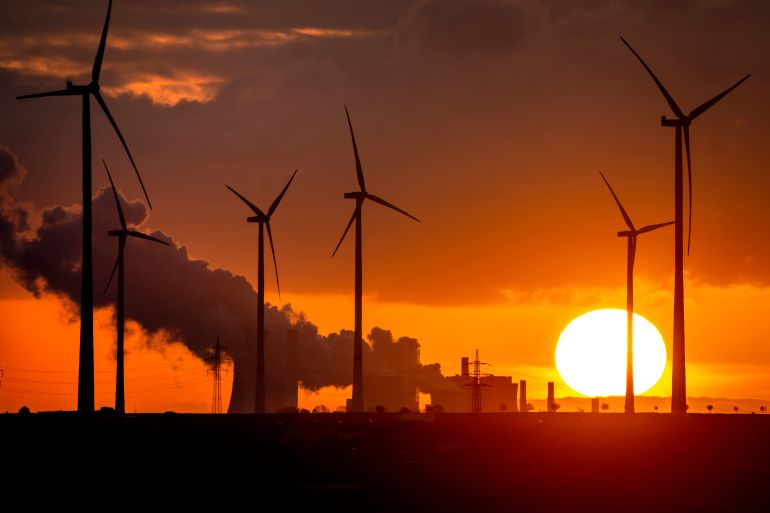‘A new industrial age’: The coming renewable-energy boom
Jobs in clean-energy manufacturing will more than double from six million to nearly 14 million by 2030, the International Energy Agency estimates.

The world is at the “dawn of a new industrial age” of clean energy technology manufacturing that will triple in value by 2030 and create millions of jobs, according to the International Energy Agency (IEA).
The global market for key mass-manufactured technologies – including solar panels, wind turbines, electric vehicle batteries, heat pumps and electrolysers for hydrogen – will be worth about $650bn a year by the end of the decade, the IEA said in a report released on Thursday.
Keep reading
list of 4 itemsWhich European nations are handling the energy crisis best?
Photos: How 2022 became a ‘pivot year’ for clean energy
UAE names oil company chief to lead UN’s COP 28 climate talks
The figure is more than three times larger than current levels but is conditional on countries fully implementing their energy and climate pledges.
Related jobs in clean energy manufacturing will more than double from six million to nearly 14 million by 2030, and “further rapid industrial and employment growth is expected in the following decades as transitions progress,” the agency said.
“The energy world is at the dawn of a new industrial age – the age of clean energy technology manufacturing,” it said.
China has been dominating both the production and trade of “most clean energy technologies”, it added.
However, the Paris-based organisation warned the concentration of resource extraction and manufacturing posed risks to supply chains.
Three countries account for 70 percent of the manufacturing capacity for solar, wind, battery, electrolyser and heat pump technology, with China “dominant in all of them”.
Democratic Republic of the Congo produces more than 70 percent of the world’s cobalt, and three countries – Australia, Chile and China – account for more than 90 percent of the global production of lithium – a key resource for electric vehicle batteries.
‘Paying a heavy price’
Supply chain tensions have risked making the energy transition more difficult and expensive, the report added.
In a first, rising cobalt, lithium and nickel prices in 2022 led to an increase in the global price of electric vehicle batteries by almost 10 percent.
The cost of building wind turbines outside China has also crept up after years of declining prices, while similar trends are affecting solar panels.
The report said clean energy project developers and investors are watching closely for the policies that can give them a competitive edge. Government policies and market developments can have a significant effect on where the rest of these projects end up.
IEA executive director Fatih Birol urged countries to diversify supply chains, citing Europe’s dependence on Russian gas as a prime of example of the potential exposure to disruption caused by depending excessively on one trade source.
“As we have seen with Europe’s reliance on Russian gas, when you depend too much on one company, one country or one trade route – you risk paying a heavy price if there is disruption,” he said.
Birol also stressed the importance of international collaboration, “since no country is an energy island and energy transitions will be more costly and slow if countries do not work together.”
The IEA said in October that Russia’s invasion of Ukraine is likely to accelerate the world’s transition to greener energy from fossil fuels.
Energy security is “the biggest driver of renewable energies”, said Birol.
“Energy security concerns, climate commitments … industrial policies – the three of them coming together is a very powerful combination,” he said.